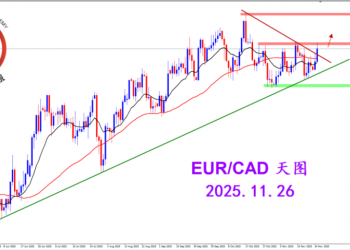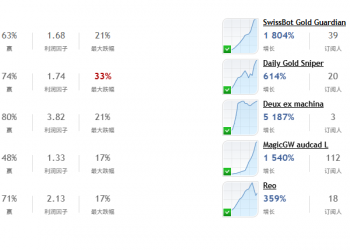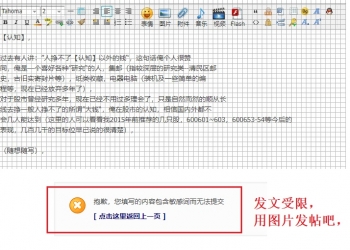The US dollar continued on its path higher this week, but its strength was mostly concentrated against European currencies (EUR & CHF). After retracing lower for the first half of the week, the dollar staged a sharp reversal higher in mid-week after encountering latent institutional dollar buying/EUR selling interest at the critical 1.2350 level. Friday’s US trade deficit, which came in better than consensus expectations, but still widened to $57 bio, gave the dollar a final boost into the week’s close. While the dollar rallied across the board late in the week, it should be noted that it failed to make new weekly highs against JPY, GBP, and AUD, and the greenback was basically steady against the CAD.
上周美元持续走升,优势主要集中于兑欧洲币种(欧元&瑞郎).美元在前半周回落之后,中期开始急剧反弹,原因在于一些机构经纪商于关键技术位1.2350多头买入USD,而空头卖出欧元。周五贸易赤字好于民众预期,USD570亿,休市前再次推动美元上涨。虽然美元在后半周全线回升,但值得注意的是兑JPY,GBP及AUD未能创造新高,而美元兑加元基本保持平稳。
This suggests a further de-linking of the dollar from other major currencies, meaning that the dollar is unlikely to resume trading in lockstep against all major currencies as it did during much of 2004 and early 2005, when the “demise of the dollar” scenario failed to differentiate between currency pairs. Increasingly so, individual country growth scenarios and interest rate paths will determine currency pair directions, and the major crosses are likely to experience more sizeable moves than they have over the past several months. As global growth continues to show signs of a slowdown, the relative trajectories of individual economies and interest rates will take on greater importance and lead to increased country-specific speculation.
如此迹象表明美元兑其他主要货币未来呈回落趋势,美元如2004年及2005年早期一样接连上升的可能性不大。而国家的发展速度及利率将决定货币对的走向,主要交叉货币对将比上几个月经历更大变动。由于全球经济增长速度显示变慢迹象,所以国家各自增长速度及利率尤为重要,将有越来越多的投机行为将目光转向在这两方面有显著表现的国家。
The most clear-cut case for this focuses on the Eurozone and Switzerland as it’s de facto junior partner. Following the defeat of the EU constitution, investor sentiment has been shaken sufficiently to end the Euro’s status as the anti-dollar, or primary alternative to the US dollar. Increasingly gloomy economic forecasts for the Continent’s major economies offer little hope of a turnaround in growth in the near future and thus make a sustained rejuvenation of the Euro’s prospects unlikely this year and into 2006.
欧元区及瑞士将成为关注的焦点。在欧盟宪法提案失败后,投资者信心衰退,结束了欧元作为对美元货币或美元第一替代币种的地位。欧元今明两年经济前景一片灰暗。
The interest rate outlook has also shifted for the Euro, with fresh talk emerging of a potential ECB rate cut later this year. While I am not convinced that the inflation outlook provides sufficient cover for the ECB to cut rates, the market has picked up that ball and started to run with it. The result is a negatively reinforcing cycle of further weakness for the EUR, which could obviate the need for a rate cut to stimulate the economy as well as stoke inflation. (Consider for a moment, that a $50 barrel of oil has just increased by about 13% in EUR terms since April, and this doesn’t even take into account higher $ oil prices.) On top of that, Eurozone politicians have already expressed relief that the Euro has declined, with some still blaming Euro strength even at current levels for damaging exports.
欧元未来利率也将有所变动。欧洲央行将采取行政手段减息。通货膨胀是否是影响央行减息的因素目前不能确定,但市场已经有所反应。结果将引发另一轮欧元贬值,从而排除通过减息刺激经济增长的要求。(自四月份以来,油价$50/桶,欧元指数增加13%,油价上涨带来的影响还未算在内)。最重要的,欧元区行政官员已经公开指出欧元将贬值,有人甚至抱怨欧元目前仍过于强势,不利于出口。
The sharp shift in Euro sentiment has also caught many asset managers by surprise, and this will create further EUR selling interest as many portfolio managers remain overweight Eurozone assets on an unhedged basis. Any recovery in the Euro is likely to be met with at least partial hedging of EUR-denominated assets, and a continued slide below 1.2000 is likely to accelerate as long-term dollar bears are forced to exit. Unless the dollar ‘twin deficit’ problem deteriorates sharply in the near future, there is little reason to expect a rebound for the Euro. I would be cautious, though, about getting caught up in the notion that the ECB will cut rates, as inflation data in the months ahead is likely to see that view reversed, and this is about the only scenario left to support the EUR.
一些资产管理人对欧元形势的突变甚感惊讶,这将导致进一步的欧元做空行为(由于他们仍持有重仓)。如有任何回升,也是部分欧元货币对平仓所致。此外美元长线退出熊市,欧元如跌破1.2000有加速回落的可能。除非影响美元的“双赤字”问题有相当程度的恶化,否则欧元没有反弹可能。需提醒大家注意:尽管央行将降息,但未来几个月通货膨胀有反转迹象,这将是支撑欧元的唯一因素。
This weekend sees a G-8 meeting of finance ministers in the UK, which will be attended by Chinese officials as guests. The bulk of the meeting is expected to focus on international trade and debt relief, with some discussion expected on the RMB. Major currencies are not expected to be a topic, but it is likely that European finance ministers will make some public observations over the Euro’s recent weakness, and I expect those comments to generally welcome the decline.
本周末将在英国召开八国财长会议,而中国相关官员将做为嘉宾出席。会议主题将围绕国际贸易及减免债务而展开,有望就RMB展开一些讨论。预计不会谈到主流货币,但欧洲财长有望就欧元近期弱势情况发表公开看法,应该会对欧元贬值持欢迎态度。
That the US dollar was able to shrug off a -$57 bio trade deficit for April and rally, when just a few months ago an identical result sent the dollar plummeting, is incongruous to say the least. The dollar will face further tests next week as major components of the ‘twin deficits’ are reported. US data for the week begins with PPI and retail sales on Tuesday. Headline PPI is expected to decline -0.2% MoM while core PPI is forecast to rise a benign 0.2%, reinforcing the notion that inflation remains contained. Advanced retail sales are expected to decline -0.2%, while core ex-auto retail sales are expected to gain 0.2%. However, such results would be well below the 1.4% increase seen in April and thus likely to cast some doubt on the durability of the US consumer. CPI data on Wed. is likely to signal an even greater moderation in inflationary pressures, potentially eroding the case for much more tightening. The highlight on Wed. will be the TIC or net foreign security purchases report for April. Forecasts are for a rebound to $71.5 bio, but a result similar to March’s disappointing $45.7 bio could ignite fresh concerns over the ability of the US to continue to fund its deficits and maintain the value of the dollar. Later Wednesday, the Empire manufacturing index is expected to rebound from -11.1 to +3, as is the Phila. Fed index on Thursday. The current account deficit for 1Q is due out on Friday and is expected to widen to $190 bio from the 4Q’s -$187.9 deficit; this will be the most important test to see if deficits no longer matter for the dollar. Finally on Friday, preliminary estimates for the June Univ. of Michigan consumer sentiment index are expected to improve to 88.5 from 86.9.
四月美国成功缩减贸易赤字570亿美元,美元反弹。而就在几个月前一份重要的贸易赤字报告曾导致美元迅速下滑,两种情况截然不同。双赤字报告以后,本周美元将继续测试。本周最先公布的将是周二生产者物价指数及零售业销量。预测下降0.2%(/月),核心指数预测上升0.2%,再次表明通货膨胀得到有效控制。高级零售业预测下降0.2%,而除运输业的核心指数预测上涨0.2%。然而,相比4月上升1.4%的成绩,有可能对消费者信心造成一些打击。消费者物价指数将在周三发布,有望减轻通货膨胀压力。重点需要关注周三四月份外国资本购买本国股票数据。预测上涨至715亿美元,如接近三月457亿美元,则外资流入是否能抵消本国赤字,美元是否能维持目前价值都将成为问题。周三晚些时候,联储制造业指数将由-11.1上升到 +3,费城联储指数将于周四公布。第一季度经常项目赤字将在周五发布,预测由去年第四季度-$1879亿扩大为$1900亿,它是决定赤字问题是否将影响美元的重要因素。周五为6月密歇根大学消费者满意度首次预测值,预计由86.9改善为88.5。
Japan will report its final estimate of 1Q GDP early on Monday, and it is expected to show yet another revision higher to 1.4% from the prior 1.3% estimate, underlining the sharp rebound Japan experienced in 1Q. Final April industrial production data is due out later on Monday and expectations are for no change to solid initial reports. Machine orders data for April is due out late on Thursday in Tokyo and it is expected to decline -2.0% MoM, reversing March’s 1.9% rise, but still post a 1.3% YoY gain. On Friday afternoon in Tokyo, the final April leading economic index is expected to rise sharply to 31.8 from the preliminary 25.0 reading. Given the uncertainty elsewhere, it would not be surprising to see the JPY experience solid gains next week if the data is even mildly supportive.
日本将在周一发布第一季度末次GDP预测值,预计由前次1.3%修正为1.4%。四月末工业产量将在周一晚些时候发布,预期将维持不变。四月机床订单将于周四在东京发布,预测下降2.0%(/月),但年率仍增长1.3%。周五下午在东京发布第四季度末领先经济指数,预测由前值25.0大幅上升到31.8。由于其他货币前景不确定,日圆本周有望得到数据面支撑而产生较大回升。
UK data next week also sees PPI and CPI on Monday and Tuesday, respectively. Forecasts are for relatively benign MoM readings, suggesting inflationary pressures continue to wane and keeping the focus on BOE rate cuts later this summer. Unemployment data on Wednesday is expected to see the unemployment rate hold steady at 2.7%. April leading indicator data is scheduled for later on Wed. Retail sales for May on Thursday has the potential to hurt Cable if it weakens as expected to +0.1% MoM vs. a prior +0.5% gain, and a YoY drop to +1.8% from the prior +2.3%.
英国本周也将在周一与周二发布生产者物价指数及消费者物价指数,预期都有良好表现。反映出通货膨胀得到控制,把焦点转向央行减息计划。周三将发布失业率,预测保持稳定在2.7%.四月领先指标将于周三晚些时候发布。5月零售业销量将于周四发布,预测月率仅上涨0.1%,而前期为+0.5%,年率由2.3%下降为1.8%,有可能对英镑造成不利影响。
Eurozone May CPI data on Thursday is the highlight for the week; MoM it is expected to rise 0.3% vs. April’s 0.4%, but the core YoY rate is expected to rise 1.5%, faster than April’s 1.4% increase. There are several ECB officials speaking and events during next week. The ECB will be hosting a conference on EMU on Wed. and Thurs. at which one can expect a fair amount of cheerleading over the success of the Euro as well as efforts to reinforce the independence of the ECB following the demise of the EU constitution. The ECB’s Chief Economist, Otmar Issing, is scheduled to speak on Monday and again on Thursday, and he can be expected to refine and elaborate further on the ECB’s current thinking regarding the direction of interest rates. (It’s my suspicion his comments about an interest rate cut were taken out of context and he will seek to refute that interpretation.
周四将公布欧元区5月消费者物价指数,成为本周数据面关注焦点。月率预测上涨0.3%,而4月为0.4%,但核心指数年率预计增长1.5%,增速快于4月1.4% 。另外,欧洲央行官员将发表一系列讲话,还将于周三周四在EMU主持召开会议,预期将公布欧元支持数量,并强调在欧盟宪法提案遭到否决后保持央行独立的重要性。央行首席经济学家Otmar Issing计划在周一及周四发表演讲,将就央行目前对利率问题的态度展开详述。 |
 2025.11.26 图文交易计划:欧加试探拉升 关322 人气#黄金外汇论坛
2025.11.26 图文交易计划:欧加试探拉升 关322 人气#黄金外汇论坛 MQL5全球十大量化排行榜1043 人气#黄金外汇论坛
MQL5全球十大量化排行榜1043 人气#黄金外汇论坛 【认知】5293 人气#黄金外汇论坛
【认知】5293 人气#黄金外汇论坛 关于论坛修改用户名称的图解1118 人气#黄金外汇论坛
关于论坛修改用户名称的图解1118 人气#黄金外汇论坛